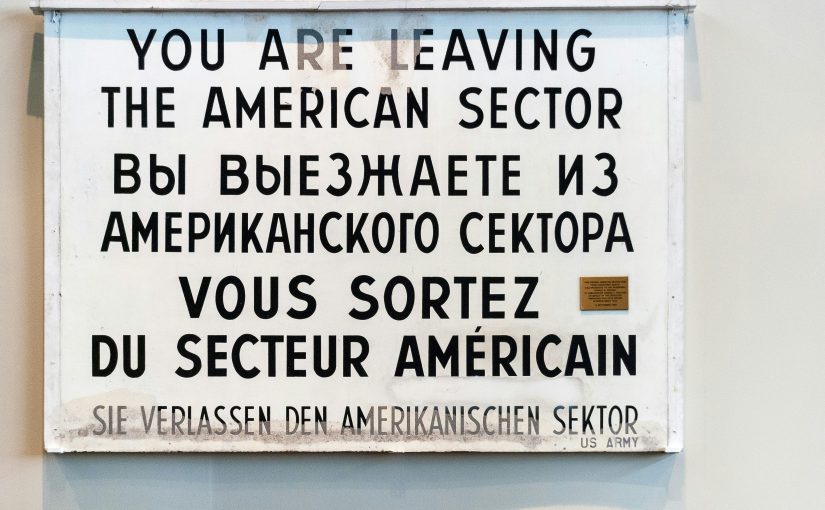
In a world teeming with over 7,151 languages (and counting!), it’s no surprise that communication barriers can stifle your business’s reach. This is where online translation services come in to save the day, and businesses, from missing target markets and lagging behind profits due to communication gaps.
Studies show the power of translation: businesses that invest in it see a significant boost in revenue. A report by Common Sense Advisory revealed that companies expanding their translation budgets were 1.5 times more likely to experience revenue growth.
But where do you even begin with online translations? Are they accurate? How much does it cost? Can they translate that hilarious dog meme you want to include on your website? (Maybe not that last one.) You might have a hundred questions shooting out, whether you’re a business planning to expand into new markets or an ecommerce giant who wants to bridge communication gaps between suppliers sitting all over the world. This blog post is your one-stop guide, answering the 10 most frequently asked questions about online translation services.
1. Which format should I send the files in?
The best format to send your files for online translation depends on the type of content you have. Here’s a breakdown to help you choose:
For documents:
- Ideal: Microsoft Word (.docx) or plain text (.txt) files are universally recognized and work well for most translation services.
- Acceptable: PDFs (.pdf) are also widely accepted, but some formatting might be lost during translation. If your PDF has crucial layout elements, check with the service beforehand.
- Avoid: Avoid sending scanned documents (.jpg, .png) as they are images and the text cannot be easily extracted for translation.
For presentations:
- Ideal: Microsoft PowerPoint (.pptx) files are the best choice as they preserve formatting and graphics.
For spreadsheets:
- Ideal: Microsoft Excel (.xlsx) files are preferred to maintain the data structure and formulas.
For websites:
- Most services handle website translation directly through a link or API. You won’t need to send any files in this case.
2. How much does a translator charge per hour?
Online translations typically don’t charge by the hour, but rather by the word or by the project. Here’s why:
- Variable workload: Translation projects can vary greatly in length and complexity. Charging by the hour might not accurately reflect the work involved.
- Standardized pricing: Per-word pricing allows for a more transparent and predictable cost for clients.
However, some freelance translators who work outside of online translation platforms might offer hourly rates. This can be a good option for projects where the word count is difficult to estimate beforehand.
Here’s a range for what you might expect to pay for online translation services (per word):
- Basic translations: $0.08 – $0.12
- Technical or specialized content: $0.15 – $0.30
- Rare languages or urgent projects: $0.30 and above
Remember, these are just estimates. The final cost will depend on factors like the language pair, the complexity of the content, and the turnaround time.

3. Are online translation services accurate?
The accuracy of a translation service varies based on machine vs. human translation. Here’s a quick comparison:
- Machine Translation: This is the technology powering most online translations. It has come a long way, but it still isn’t perfect.
- Pros: Fast, affordable, can handle large volumes of text.
- Cons: Can struggle with complex sentence structures, idioms, and cultural references. Accuracy is generally lower for less common languages.
- Human Translation: Professional human translators offer the highest level of accuracy, especially for complex content.
- Pros: Superior understanding of context, nuance, and cultural references.
- Cons: More expensive than MT, takes longer.
Factors Affecting Accuracy:
- Language Pair: Translations between common languages like English and Spanish tend to be more accurate than those involving less common languages.
- Content Complexity: Simple, factual texts are easier for MT to handle than documents full of jargon, technical terms, or creative writing.
- Service Features: Some online services offer human editing or proofreading to improve the accuracy of MT output.
4. Can online translation services translate everything?
Online services are impressive tools, but they do have limitations when it comes to what they can translate effectively. Here’s a breakdown of what they can and can’t handle:
What They Can Translate Well:
- Simple, factual texts: News articles, product descriptions, user manuals with straightforward language are generally translated well by Machine Translation.
- Common languages: Translations between major languages like English, Spanish, French, and Chinese tend to be more accurate due to larger training datasets for MT algorithms.
- Large volumes of content: Online services can churn through vast amounts of text quickly, making them ideal for translating websites or large databases.
What They Can’t Translate Perfectly (and Might Need Human Help):
- Complex documents: Legal contracts, medical reports, or technical documents with specific terminology can be tricky for MT due to the nuance and precision required.
- Creative content: Poetry, marketing copy with wordplay, or humor often relies on cultural references and stylistic choices that get lost in translation. Human understanding is crucial here.
- Slang and idioms: MT struggles with informal language or expressions with figurative meanings.
- Rare languages or dialects: Accuracy can be lower for less common languages due to limited training data for MT.

5. Is it safe to use online translation services for confidential information?
The world of online translation is a double-edged sword. It’s fast, convenient, and can unlock new markets for your business. However, when it comes to confidential information, a question arises: Can you trust these services with your company’s secrets?
In 2017, a Norwegian news agency stumbled upon a shocking truth. Highly confidential corporate data, including employee dismissal notices, restructuring plans, and even passwords, had been leaked through a free online translation! The service itself claimed the right to analyze user data for “service improvement,” raising serious red flags about data privacy. This wasn’t an isolated incident, with further investigations revealing similar breaches of sensitive personal and corporate information.
Why Online Translation Services Can Be Risky:
- Data Breaches: Despite security measures, online services are still vulnerable to hacks, potentially exposing your confidential information.
- Employee Access: Depending on the service, employees might have access to translated content, even if they aren’t directly involved in your project. This creates additional security risks.
- Limited Control: Once you upload your information, you relinquish control over where it’s stored and accessed. This can be a concern for highly sensitive data.
Human Translation Offers Enhanced Security:
- Confidentiality agreements: Professional human translators typically sign NDAs to ensure the privacy of your information.
- Direct communication: You can work directly with the translator, eliminating concerns about third-party access.
- Offline translation: Some translators offer offline translation options, where your data never touches the internet.
6. How fast can I get my website translated?
The speed of getting your website translated depends on several factors, but online translations can generally deliver results much faster than traditional human translation methods.
Factors Affecting Translation Speed:
- Website Size: Larger websites with more content will naturally take longer to translate than smaller ones.
- Language Pair: Translations between common languages like English and Spanish might be completed quicker than those involving less common languages due to the availability of translators and resources.
- Service Type: Some services offer different translation tiers with varying speeds. Rush options typically cost more but deliver translations in a shorter timeframe.
Here’s a general timeframe for website translation:
- Machine Translation: Simple websites can be translated in minutes, while complex ones might take a few hours.
- Human Translation: Expect a turnaround time of 2-5 business days for smaller websites and potentially longer (up to a week or more) for larger or complex websites.

7. Can I request a translator with specific qualifications?
Not all online translations offer this feature, so it’s important to choose one that caters to specific needs. Look for services with options like:
- Subject Matter Expertise: These services allow you to specify the field of your content (e.g., legal, medical, technical) and match you with a translator who has experience and knowledge in that specific area.
- Experience Level: Some platforms let you choose translators based on their experience level (e.g., beginner, professional, native speaker).
- Location Preferences: For a more culturally nuanced translation, you might be able to request a translator who is a native speaker of the target language and resides in a specific region.
8. Can online translation services convert my content to audio?
This functionality falls under the umbrella of “text-to-speech” technology, and while it’s not always universally available across all language translation services, it’s becoming increasingly common.
The Process: You translate your content using the service, and then some platforms offer an additional option to convert the translated text into an audio file.
Benefits: This creates an audio version of your translated content, allowing users to listen instead of read. This can be helpful for accessibility purposes or for multilingual marketing campaigns.
Not all language translation services offer text-to-speech functionality. Be sure to check the specific features provided by the service you choose.
9. Can online translation services help my website rank higher in global searches?
Yes, online translations can potentially help your website rank higher in global searches, but it involves a strategy called multilingual SEO. Here’s how it works:
- Increased Visibility: By translating your website content into different languages, you reach a wider audience and search engines take notice. This can lead to more website traffic from relevant users in your target markets.
- Keyword Targeting: Some online translations offer keyword research and optimization for target languages. This makes sure that your translated content incorporates relevant keywords that users in those regions might search for.
- Improved User Experience: A website translated into a user’s native language provides a better user experience. Search engines favor websites that offer a positive user experience, which can give you a slight ranking boost.

10. What guarantees do I have about the privacy of my translated content?
This translation FAQ is more common than you think. When it comes to online translations, convenience and speed come with a bit of a privacy trade-off. There’s always a chance of data breaches, and some services might allow employees access to your translated content. This can be a concern for confidential information.
To mitigate these risks, some online services offer features like data encryption and even NDAs for translators. However, for ultimate privacy, human translation is the way to go. Here, you communicate directly with the translator, who typically signs an NDA to keep your information confidential. Some human translators even offer offline translation, where your data never touches the web at all.
The best approach depends on your needs. If you’re dealing with top-secret documents, human translation with an NDA is the most secure option.
Wrapping Up
So, there you have it! Ten FAQs about online translation services, answered. We’ve covered everything from turnaround times to translator qualifications, and hopefully given you a clearer picture of what these services can offer.
Here at TranslateSwift, we take pride in providing high-quality translations you can trust. We offer official and certified document translations in over 120 languages, with delivery in as little as 24 hours and a money-back guarantee. Plus, our secured servers ensure your information remains confidential.
FAQs – Online Translation Services
- Can online translation services handle slang and informal language?
Online translations can struggle with slang, sarcasm, and other informal language nuances. These terms often rely on cultural context that gets lost in machine translation.
- Do online translation services offer translations for creative content like poems or marketing copy?
While some online services might offer basic creative content translation, the results can be clunky and miss the mark. Human translators with an understanding of the target audience and the creative intent can deliver the best results for this type of content.
- Is it possible to get a live person to translate my conversation with someone who speaks another language?
Yes! There are online services that offer live interpretation options. These services connect you with a live translator who can interpret your conversation in real-time.
- Can I use online translation services to learn a new language?
Online services can be a helpful tool to supplement your language learning journey. They can help you understand basic vocabulary and sentence structure. However, relying solely on them can hinder your ability to develop fluency and grasp the nuances of a language.










